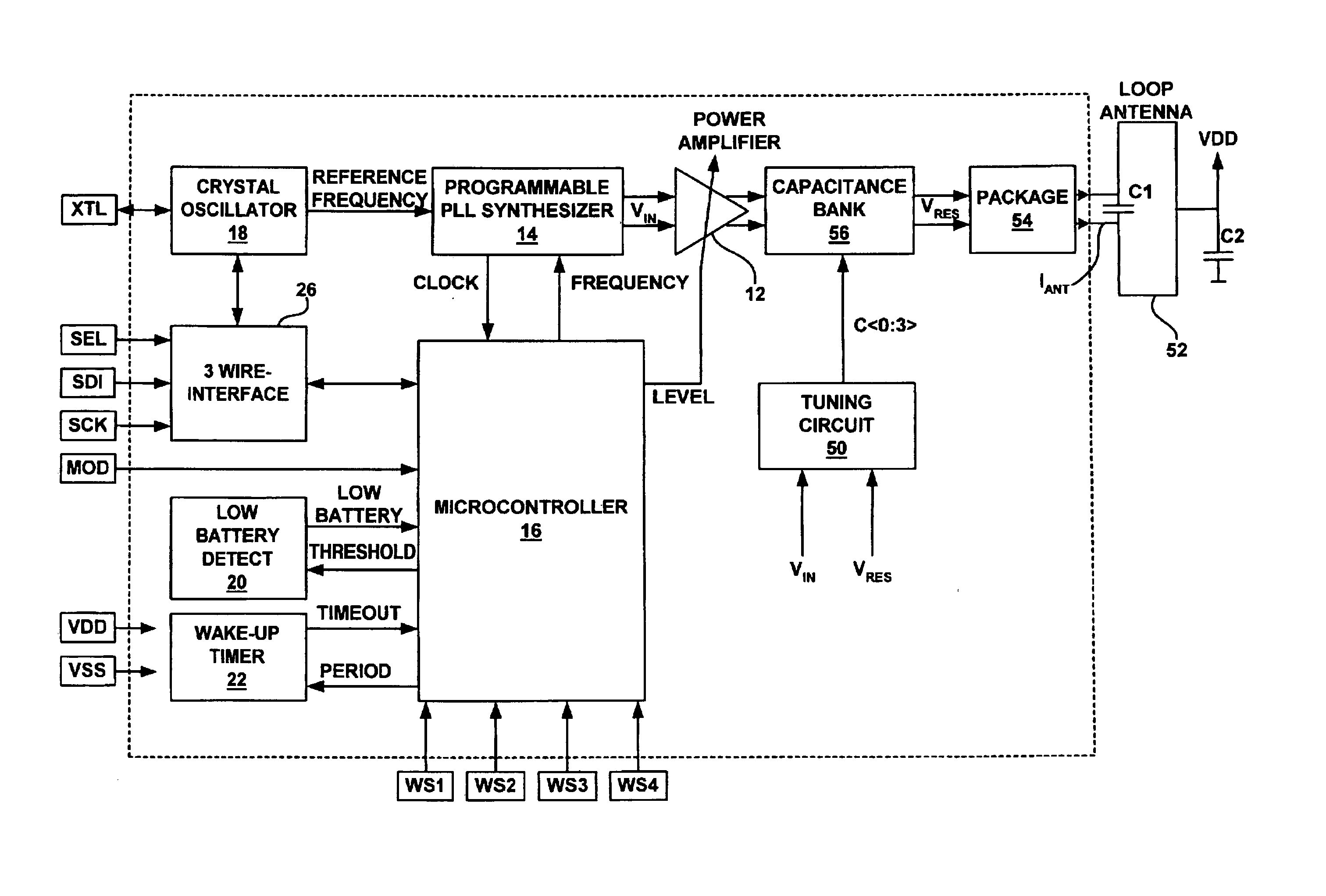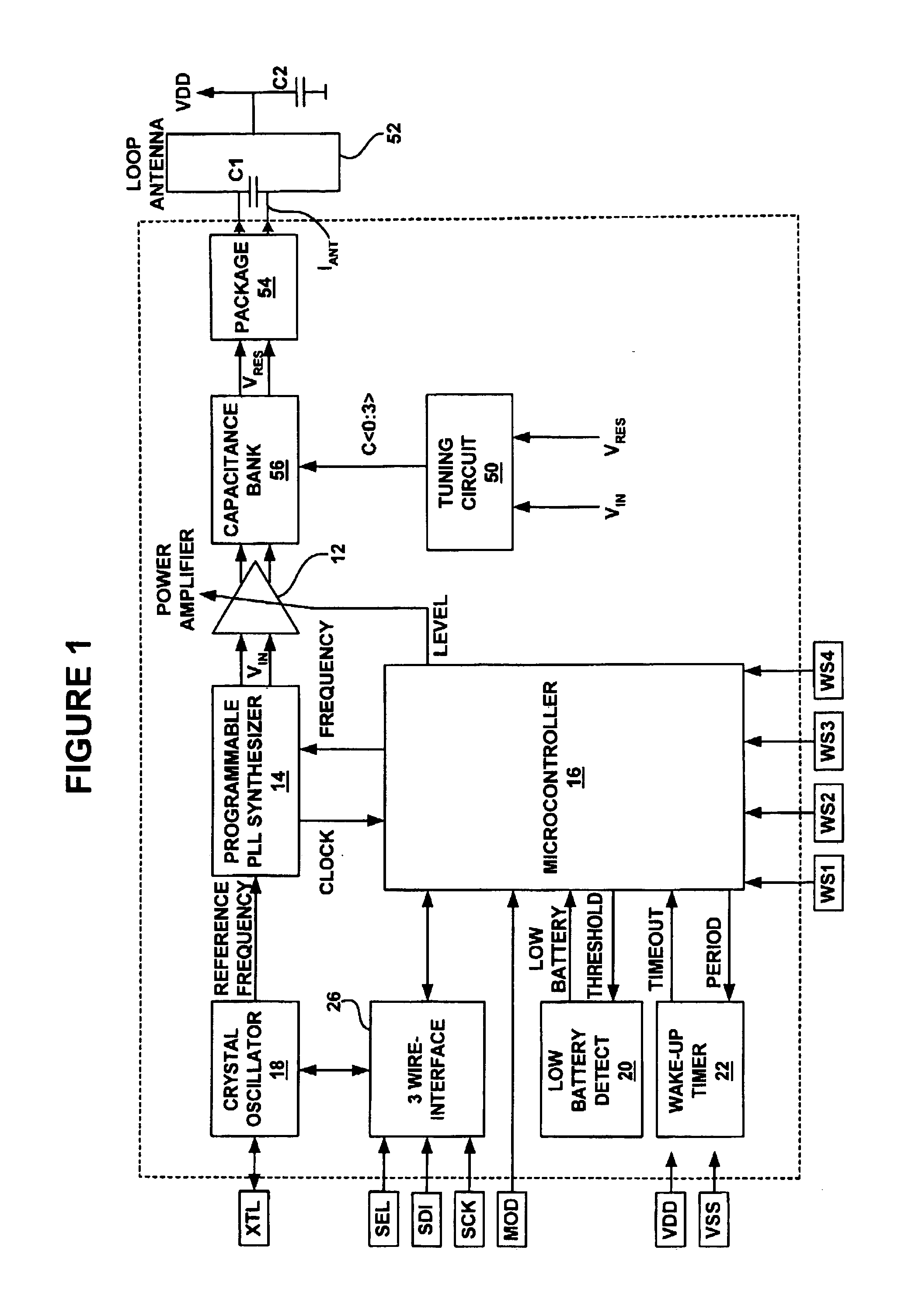Method and apparatus for automatic tuning of a resonant loop antenna in a transceiver circuit
a transceiver circuit and automatic tuning technology, applied in the field of transceiver circuits, can solve the problems of circuit failure, high minimum limit of supply voltage and signal amplitude on the antenna, and disrupt oscillation, and achieve low operating voltage supply levels and high output signal levels
- Summary
- Abstract
- Description
- Claims
- Application Information
AI Technical Summary
Benefits of technology
Problems solved by technology
Method used
Image
Examples
Embodiment Construction
[0020] The present invention is directed toward a method and apparatus for tuning small resonant loop antennas in transceiver circuits.
[0021] To minimize the current consumption, external component count and size of an RF transmitter it is desirable to directly drive an integrated loop antenna having high input impedance. Small loop antennas need tuning capacitance to obtain antenna resonance at a desired operating frequency in order to improve radiation efficiency. The desired resonant frequency for a circuit may be affected by variations in integrated circuit processes, circuit packaging, and PCB manufacturing tolerances.
[0022] The antenna tuning circuit and method of the present invention identifies a de-tuned condition and acts in order to minimize the detuning. The present invention works on the principle that, when in resonance, the resonant voltage (Vres) and antenna current (Iant) on the complete resonator (antenna, package, plus tuning capacitance) are in phase. If a phas...
PUM
 Login to View More
Login to View More Abstract
Description
Claims
Application Information
 Login to View More
Login to View More - R&D
- Intellectual Property
- Life Sciences
- Materials
- Tech Scout
- Unparalleled Data Quality
- Higher Quality Content
- 60% Fewer Hallucinations
Browse by: Latest US Patents, China's latest patents, Technical Efficacy Thesaurus, Application Domain, Technology Topic, Popular Technical Reports.
© 2025 PatSnap. All rights reserved.Legal|Privacy policy|Modern Slavery Act Transparency Statement|Sitemap|About US| Contact US: help@patsnap.com



